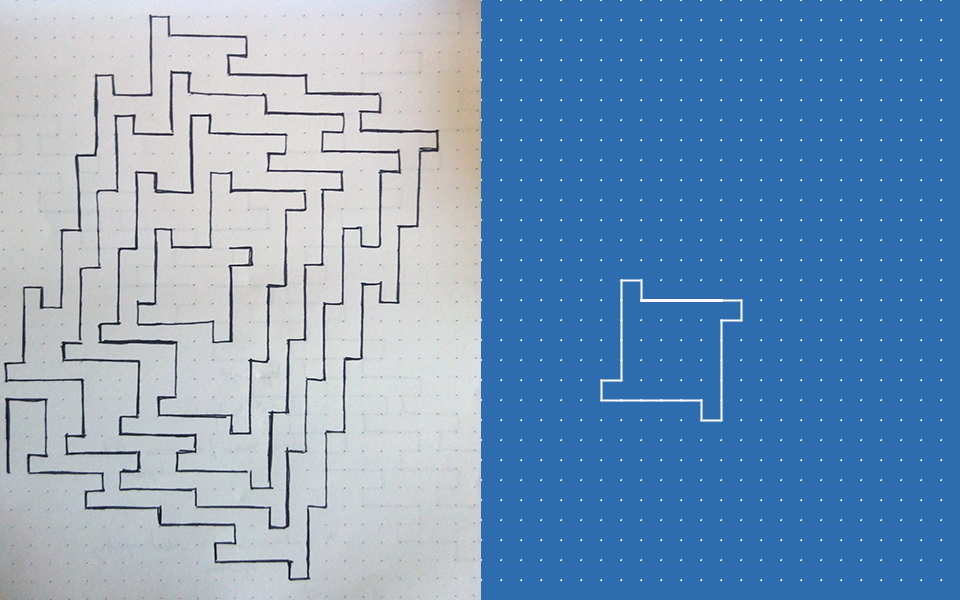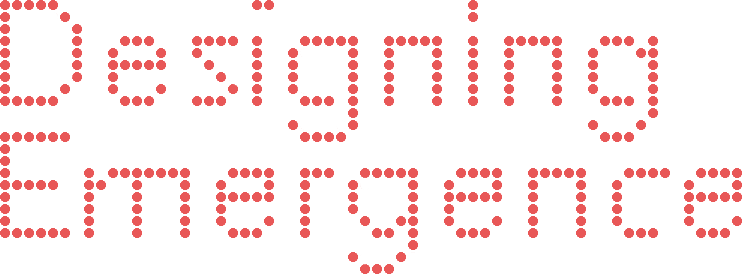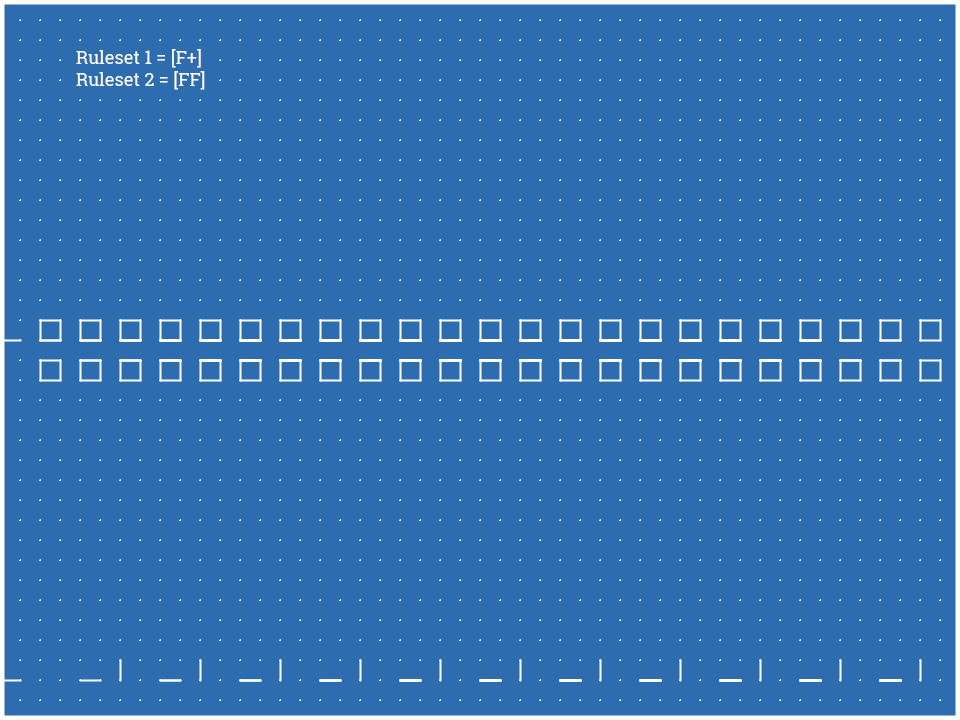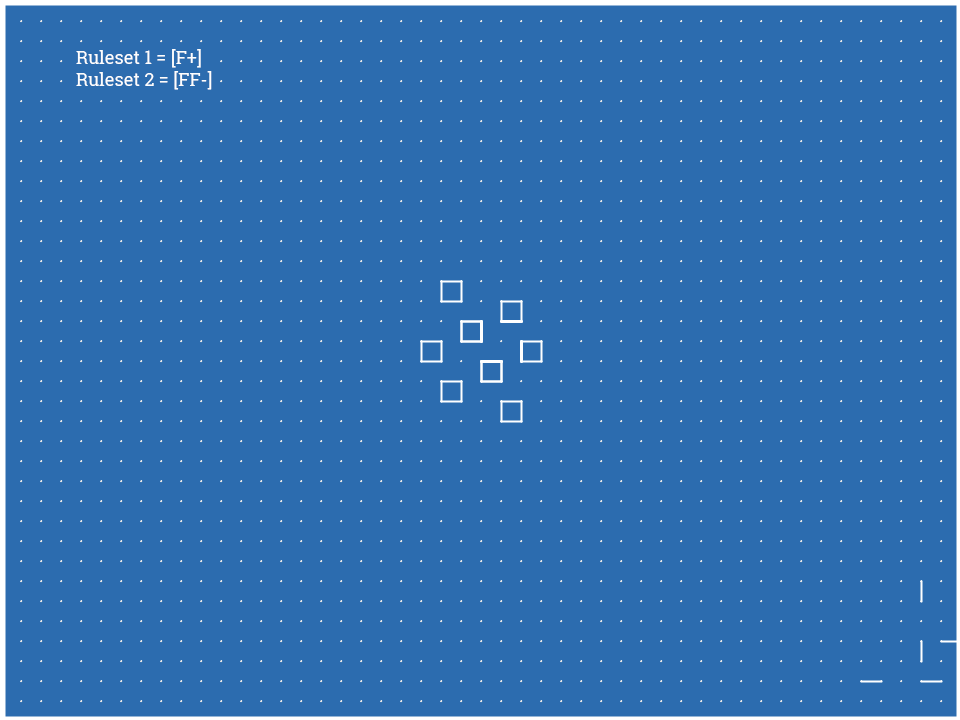Emergent Doodles: Thoughts

When creating ‘Emergent Doodles’ , my incentive was to design a system where the output could not be predicted by the input of the designer. I created an environment where a doodler would follow a simple set of rules which changed depending on what the doodler encountered in its path. I first began doing this on pen and paper to understand the idea of emergence. I came up with a set of rules, and then tried to predict what the resulting pattern would be. I quickly found that my guesses were completely wrong. I was generally able to predict the pattern for the first few steps, but as the environment became more complex, it was hard to hold all of the information in your head. It was like playing chess against yourself, in your head.
I was excited by the fact I couldn’t predict the form in advance. I translated the system in a program that drew patterns based on simple rulers. I was able to explore a lot of patterns very quickly and came up with some interesting and unexpected results. I found that small changes to the code led to remarkable changes in what patterns were produced. For example, shown below is the following ruleset.
When you change one rule, in this case adding a (-) to the second ruleset, you get a very different pattern.
Emergent Doodles can be modified to get even more interesting results. I can introduce a new ruleset that applies when the pattern reaches the boundary. Also, unlike the pen and paper version, the doodler only looks for an obstacle after it has completed all of the instructions. If it was to look for an obstacle after each step, it has the potential to not get stuck in a loop. An even more advanced program would have some desire to ‘survive’ and not get stuck in a loop, perhaps employing a neural network to learn as it doodles.

Both doodles follow the same rules. However, the pen and paper doodle looks for obstacles after every step whereas the program only does so after going through the entire ruleset. As a result, the second doodle gets stuck in a loop.
Based on this simple experiment, I believe there is a lot of scope in using emergence to come up with unique and surprising patterns. The process can be applied to a wide variety of forms, from creating patterns for textiles to designing the mesh backs for chairs. I will definitely explore emergence to design new forms in different contexts in future projects.



Leave a Reply